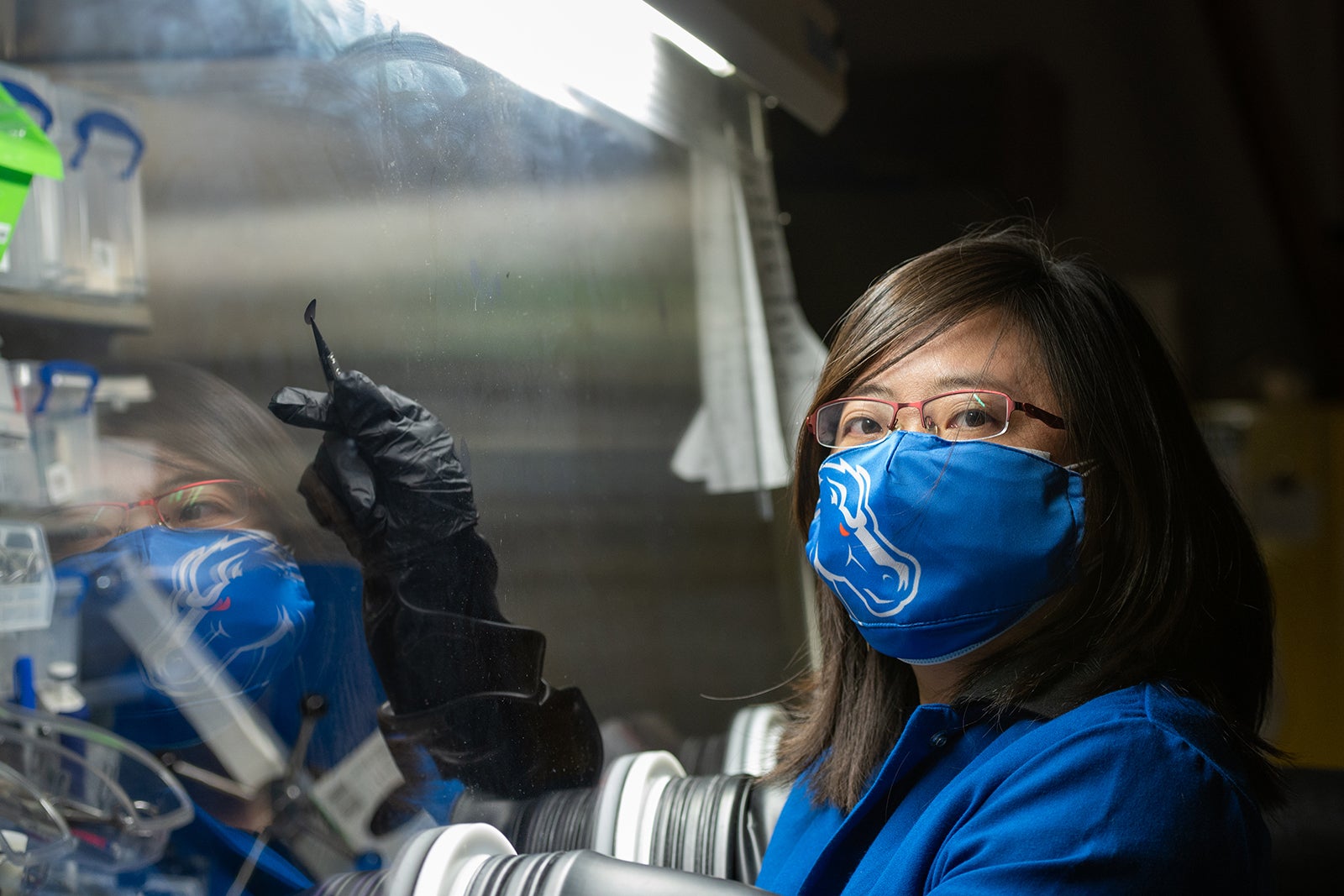
When we place a battery into a child’s remote control car, we know that there is a positive (+) symbol at one end and a negative (-) symbol at the other. The positive end of the battery holds the cathode. Typically, cathodes are a limiting factor of how densely energy can be packed into a rechargeable battery. But what if the processes and materials around the cathode could be changed to function differently, and expand how much energy a rechargeable battery can hold?
That is what Boise State Associate Professor Hui (Claire) Xiong from the Micron School of Materials Science and Engineering is attempting to do. The research is in partnership with Professor Yan-Yan Hu from the Chemistry and Biochemistry Department at Florida State University and is supported by a three-year grant of $531,005 from the Office of Naval Research.
“People in our field are trying to see if we have alternatives to the current battery design technology where we can use cheaper and more Earth abundant materials,” said Xiong. “We could have more independence in terms of making those systems work, and satisfying high power density and stability.”
An important component of this research is the focus on sodium ion batteries. Unlike lithium ion batteries, sodium ion batteries would contain less critical materials, and Xiong explains that they are a promising alternative for lithium batteries.
“For lithium ion batteries like those in electric vehicles and for electric grids using renewable energies, the power is from raw materials like lithium and cobalt, which are critical materials,” Xiong explained. “We saw the issues with our supply chain risks, and also their price has been skyrocketing in recent years.”
By developing and testing new cathode materials and processes in sodium ion batteries, Xiong’s research has the potential to pioneer new materials processing pathways for functional electroceramic materials.
“We aim to gain an in-depth, fundamental understanding of this science by leveraging the expertise of Professor Xiong in materials synthesis, coupled with our advanced capabilities in material characterization,” said Yan-Yan Hu. “We hope to utilize this newfound knowledge to facilitate the development of sodium ion batteries that exhibit superior energy densities and prolonged cycling lifespans.”
Technologies advanced by the proposed work could include wearable energy systems and mobile power that are of interest to the Navy.